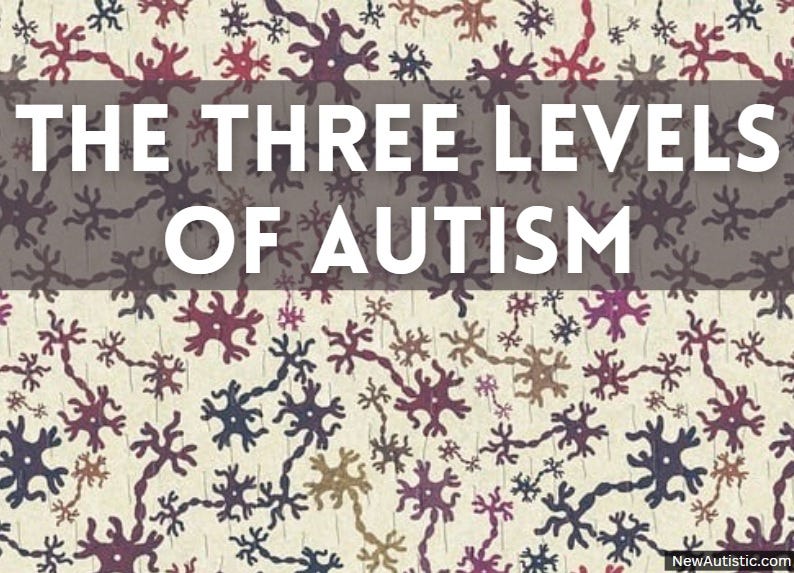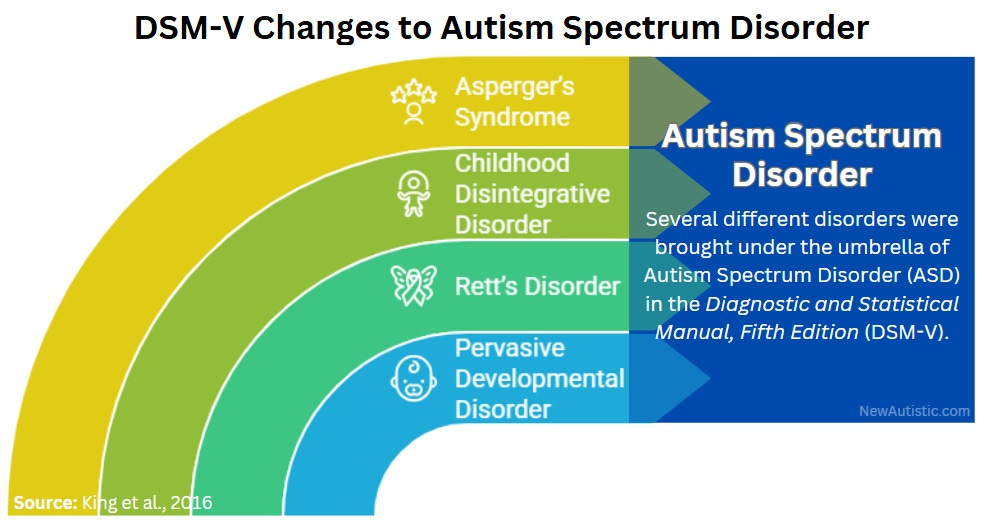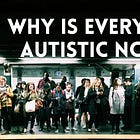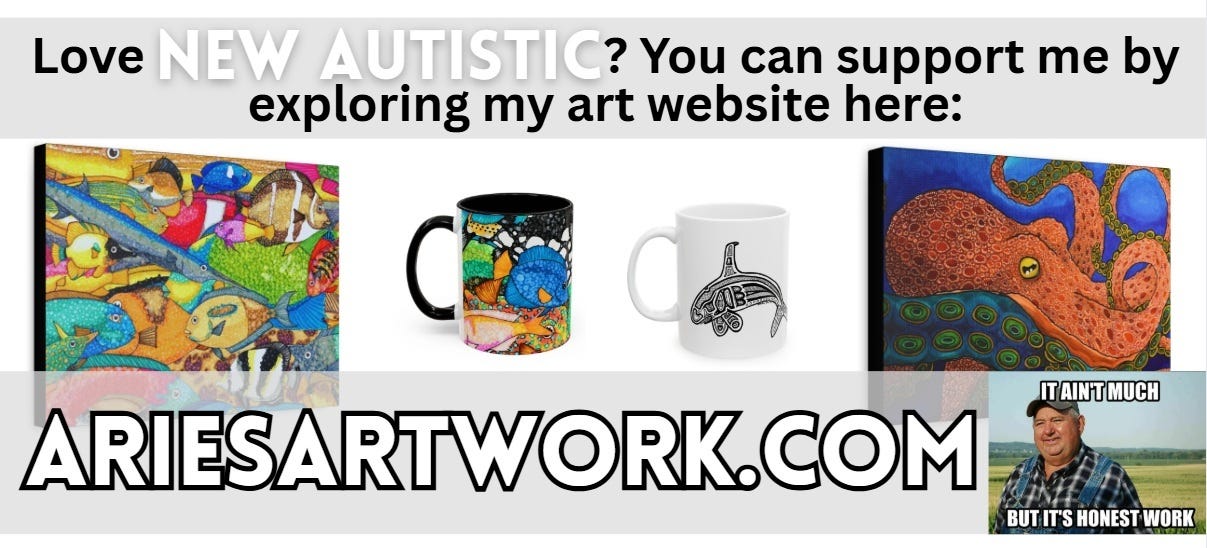Did you know that the official autism diagnosis got an overhaul in 2013? Did you also know that autism now is more fully explained by varying degrees (referred to as levels) of support needs? Don't worry if you weren't aware because it seems that most people have no idea that the diagnosis changed. In this article, I'll explain what the different levels mean, how they're determined, and what each level might look like.
This article is not a replacement for medical care, diagnosis, or therapy. It is a layman's guide meant to support and encourage understanding for Autism Spectrum Disorder (ASD) both among neurodivergent (people on the spectrum) and neurotypical (people not on the spectrum) readers. I encourage everyone to do their own research and come to their own conclusions.
Huh? Autism Comes in Levels Now?
Yes. Autism Spectrum Disorder (ASD) is now structured into three levels based on the amount of support an autistic individual might need. The levels are classed as Level 1, Level 2, and Level 3. Furthermore, a level is given to two items: social communication and restricted, repetitive behaviors. For example, someone might be Level 1 when it comes to social communication but be a Level 2 for restricted, repetitive behaviors.
Many people aren't aware that the diagnosis of autism and how it is characterized got a near-complete overhaul in The Diagnostic and Statistical Manual of Mental Disorders Fifth Edition, published in 2013 and commonly referred to as the DSM-V. The DSM is "the taxonomic and diagnostic tool published by the American Psychiatric Association." Think of it as the Bible of American psychology and psychiatry. Note that other nations may use other criteria, so please understand that I am speaking from a United States-based perspective.
Other Disorders Now Under the ASD Diagnosis
In addition to outlining levels of autism, other disorders and conditions that were once considered separate from autism that now fall under the umbrella of ASD. These other disorders and conditions include:
Autistic Disorder
Asperger's Syndrome/Asperger's Disorder
Pervasive Developmental Disorder Not Otherwise Specified (PDD-NOS)
Childhood Disintegrative Disorder
Rett's Disorder
All of the aforementioned disorders now fall under the umbrella term of ASD which is part of the reason that rates of autism diagnosis are going up: there are more disorders that fall under the label. (If you want to learn more about why rates of autism diagnoses are on the rise, read my article "Why is Everyone Autistic Now?")
A Few Misconceptions
Before going into the levels, I think it's also important to briefly discuss some other criteria from the DSM-V regarding an autism diagnosis that people often get wrong. (To see some other common misconceptions, check out my article Misconceptions About Autism.)
Intellectual Impairment Not Necessary: Having an intellectual impairment is not a prerequisite to obtaining an autism diagnosis. Autistic people run the gamut from literal geniuses to those with "profound autism" — that is, having an intelligence quotient (IQ) of less than 50.
Language Impairment Not Necessary: Many, if not most autistic people can speak and communicate similarly to neurotypical people. The idea that all autistic people are non-verbal is outdated and incorrect.
Also, please note that the quoted language and diagnostic criteria listed below come from the DSM-V.
Level 1: "Requiring Support"
Level 1 autism is defined as the autistic person "requiring support." It's the least severe form of autism which is why many Level 1 autistics end up misdiagnosed or undiagnosed, even well into adulthood. Many are able to mask or camouflage enough that they seem neurotypical, even to close friends and family.
Issues with social communication in Level 1 autism might include having trouble initiating social interactions or decreased interest in social interactions.
Issues with restricted, repetitive behavior in Level 1 autism might include difficulty switching between activities and experiencing executive functioning troubles, like having trouble with organization or planning.
Level 1 ASD is sometimes compared to what was known as Asperger's Syndrome in that someone can be intelligent but still have a number of social difficulties as well as what are perceived as strange routines and behaviors.
Level 2: "Requiring Substantial Support"
Level 2 autism is defined as the autistic person "requiring substantial support" and has more severe impacts than Level 1 autism.
Issues with social communication in Level 2 autism might include marked deficits in social communication skills (verbal or nonverbal), limited initiation of social interactions, and strange or different responses to suggestions by others. Level 2 autistics might only interact with others in social settings if the topic is about one of the autistic person's special interests, and they might speak in a way that others find strange.
Issues with restricted, repetitive behavior in Level 2 autism might include an inflexibility in behavior, having a hard time with change, or having certain repetitive behaviors that interfere with daily functioning in different ways. Other people tend to notice the Level 2 autistic's restricted and repetitive behaviors.
Despite the problematic social interactions and repetitive behaviors, some Level 2 autistics also go undiagnosed into adulthood.
Level 3: "Requiring Very Substantial Support"
Level 3 autism is defined as the autistic person "requiring very substantial support" and is the most developmentally severe form of autism. Many Level 3 autistics are what others refer to as those with "profound autism," as discussed earlier in this article. Imagine someone who struggles to communicate either verbally or nonverbally, doesn't like or accept any change about any of their routines at all, and is potentially incapable of caring for themselves.
Issues with social communication in Level 3 autism include severe deficits in verbal and nonverbal communication (sometimes to the point that someone is nonverbal), extremely limited social interactions, and minimal response to social approaches.
Issues with restricted, repetitive behaviors in Level 3 autism include an inflexibility in behavior (wanting to do the exact same thing the exact same way every single day), extreme difficulty coping with change (having a shutdown or meltdown when something is different than they're used to), and routines that disrupt functioning.
Almost all, if not all those with Level 3 autism are unable to care for themselves and will require caretakers and support throughout their lives.
All Levels Require Support
The criteria for an ASD diagnosis is, by definition, someone who requires support, substantial support, or very substantial support. This means that every single autistic person requires some level of support in their lives. The idea that we autistics, especially those of us who present as "high-functioning" or "having low support needs," don't actually need help and are just lazy or have poor work ethics is fundamentally untrue. Many autistic people take issue with such terminology because it doesn't take into account the unseen daily struggles we face.
Autistic creator and YouTuber Mom on the Spectrum offered up a compelling analogy. Imagine a duck cruising along on a placid pond. The duck makes it look easy, seemingly riding the gentle breeze from one bank to the other. But beneath the surface, the duck's webbed feet are furiously working overtime to move through the water. That movement takes effort, even if you can't see it above the surface. And while some ducks are indeed able to seem to ride the breeze effortlessly, for others, the struggle is obvious.
"But you don't look like you're struggling!" someone might snap back in the comments. "No one even picked up that you were autistic until much later in your life, so you couldn't have struggled that much!"
For many late-diagnosed autistics, we've had to become masters of camouflaging and masking — that is, appearing to be normal. It's the only way we were able to survive. Some of us are able to do it well, and some of us can't, but all of us struggle. It's time we as a society stopped ignoring that inconvenient fact.
Thanks for Reading!
Thanks for taking time out of your busy day to spend some time with me! I encourage all of my readers to RISE (Reflect, Improve, Strengthen, & Evolve) with me because healing is a lifelong journey — it’s not always easy, but it’s always worth it. You are loved, cherished, and valued. Don’t ever let anyone ever convince you otherwise.
My commitment to bringing you FREE, well-researched, and comprehensive content means I spend considerable time and effort writing each article or post without compensation.
Want to Support Me?
The simplest FREE way you can support me is by subscribing, sharing, or leaving a comment:
I believe in keeping my content accessible to everyone, without paywalls, because I know the work I do matters. For that reason, I’m beyond grateful for any financial support! If you'd like to support me and my work, check out my art website at AriesArtwork.com to bring home something unique or find a gift for that special someone in your life:
I’ll see you again when I’ve got a new info-dump for you, my Newtistics Crew!
—Skylar Aries









